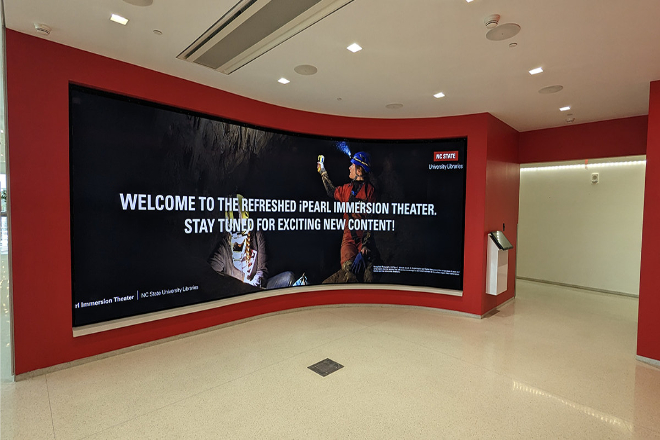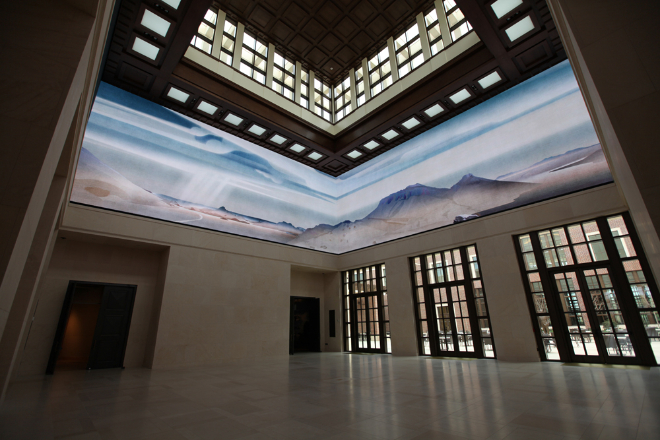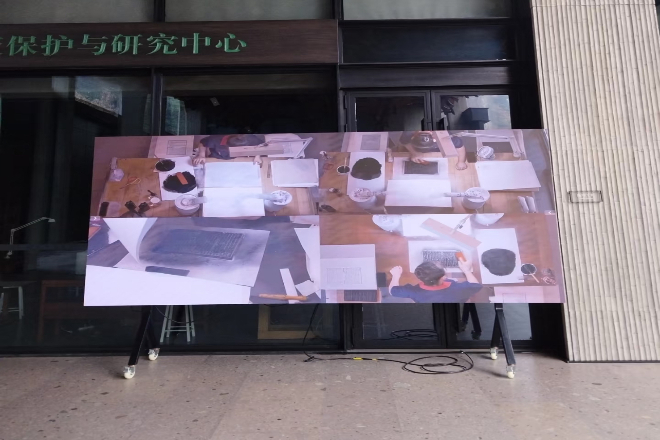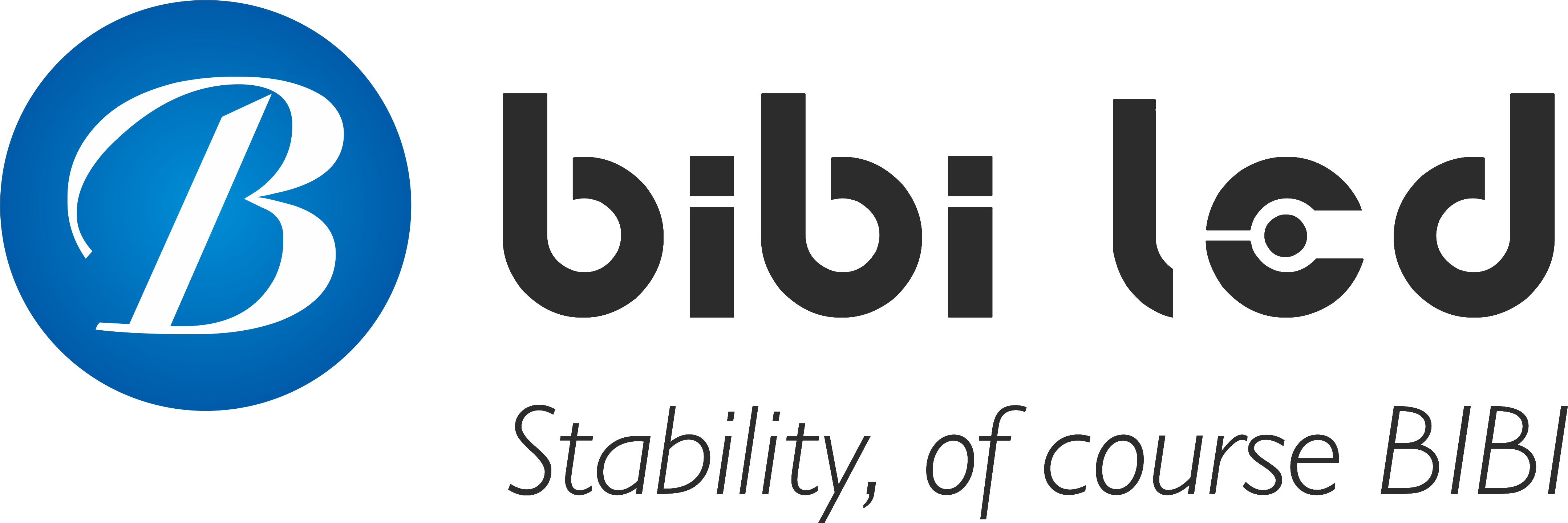소개

When you step into the library, in addition to the fragrance of books, have you noticed those flashing LED 스크린?
Don’t underestimate them, and these LED screens can be very useful! Today, let’s uncover what the library’s LED display screen can play. Let’s see what it is really useful for.
목차
1. What are the advantages of the library's LED display screen?

The LED display screen is a super powerful “message trumpet” in the library. If you want to update the information, the staff can do it in a few seconds with just a flick of their fingers.
New books are put on the shelves, activities are changed, and everything can be told to readers for the first time.
Moreover, this screen is as bright as a little sun, and you can see it clearly at any time. It can also display text, pictures, and videos at the same time.
For example, when displaying a new book, the cover, introduction, and author video can all be displayed together, which is much more interesting than posting posters. Readers can be attracted at a glance, and information dissemination is naturally much faster.
The LED display screen is like the “cultural showcase” of the library. It can display a lot of things.
The ancient books and manuscripts in the library are displayed with high-definition pictures and explanations, just like watching an exhibition in a museum. Moreover, it can also play animations and videos.
For example, it can tell the history of the library with animations, music, and narration, which is much more interesting than dry text, and readers enjoy reading it. Most importantly, this screen can also “change faces.”
Children’s libraries can display cartoon illustrations, and academic libraries can display academic lecture videos. It can display the cultural characteristics of the library clearly according to the style of the library.
The LED display screen is simply an “interactive big toy” in the library. Many screens can be touched, and readers can operate them as easily as when playing with mobile phones. If you want to sign up for an event, just click on the screen a few times, which is very convenient.
It can also play various interesting interactive games, such as “Guess the title of the book.” Once a classic sentence is played, readers can get small prizes if they guess correctly. This game can attract many readers to participate.
Moreover, readers’ opinions can also be quickly fed back to the library through the screen. The staff can deal with it immediately after seeing it. Readers will feel that their opinions are valued, and their favorability towards the library will naturally increase.
2. Specific application locations of LED display screens in libraries
1). Hall entrance
ㅏ large LED display screen is placed at the entrance of the library hall. This is the first stop for readers to enter the library, with a large flow of people and concentrated sight.
The screen can scroll through previews of various upcoming events, such as a lecture on the theme of “Environmental Protection and the Future.”
The time, location, guest introduction, and other key information are clear at a glance, allowing readers to understand the latest developments in the library as soon as they enter the door.
At the same time, it can also display the latest popular books and classic works in the library, with exquisite covers and brief introductions, such as “This week’s new book recommendation: “The Kite Runner,” a touching novel that takes you into the history of
Afghanistan and the glory of human nature,” to stimulate readers’ interest in reading.
In addition, scrolling welcome words, such as “Welcome to [Library Name], the ocean of knowledge is waiting for you to explore!” Such warm words can instantly narrow the distance between readers and create a warm and friendly atmosphere.
2). Activity area
The activity area is where various lectures, 전시회, and interactive activities are held. The LED display screen can be used as the main display platform for the activities.
Before the event starts, the screen displays the theme of the event, guest introduction, event process, and other information to facilitate participants in understanding the details of the event.
For example, “Event Preview: At 3 pm today, we will hold a lecture on “Appreciation of World Famous Paintings.”
The speaker is Professor Li, a famous art critic, who will give you an in-depth interpretation of the mysterious smile of the “Mona Lisa.”
In interactive activities such as knowledge contests and book-sharing sessions, the topic, participants’ style, and event results are displayed to increase interactivity and fun.
For example, “Knowledge contest in progress: Topic – Who is the author of “One Hundred Years of Solitude”?
A. Garcia Marquez
B. Kafka
C. Tolstoy
Write your answer on the answer board!” After the event, play the highlights and summary videos of the event so that participants can have endless aftertastes and attract other readers to pay attention to subsequent activities.
3). Rest area
The rest area is a place for readers to relax and communicate. LED display screens can be placed here to provide readers with a relaxing visual experience.
The screen can display foreign cultural heritage, traditional skills, etc., such as “The architectural art of the ancient Roman Colosseum: This magnificent building witnessed the glory of ancient Rome and still stands today, attracting tourists from all over the world.”
It can also display readers’ paintings, calligraphy, photography works, etc., to enhance readers’ sense of participation and achievement.
For example, “Reader Work Display: This is the photography work “City Night View” by reader Xiao Li, taken on a quiet night, showing the prosperity and tranquility of the city.”
In addition, show the work and activities of library volunteers, thank them for their contributions, and promote the spirit of volunteer service. For example, “Volunteer Style:
Thank you volunteer Xiao Wang, who comes to the library every week to help organize books and provide readers with a better reading environment.”
3. What factors are related to the display of the library LED display?

In the library, readers may watch the screen at different distances.
If the screen is placed in the lobby, the flow of people is large, and the readers are far away from the screen, the dot pitch can be slightly larger, such as P2.5 or P3, which can ensure clear pictures and control costs.
But if the screen is placed in the reading area and the reader is close to it, the dot pitch should be smaller, such as P1.6 or P1.8, so that the displayed text and pictures will be more delicate and more comfortable for readers to read.
The ambient light in the library is generally softer, unlike the direct sunlight outdoors. Therefore, the 명도 of the LED display does not need to be too high. About 1000-2000nit is appropriate.
If the brightness is too high, it will be dazzling and make readers uncomfortable.
Moreover, many LED displays can now automatically adjust the brightness according to the ambient light, so that the best display effect can be maintained at different time periods, such as day and night.
In the library, readers may see the screen from all angles, such as walking from the side or between bookshelves in different positions. Therefore, the viewing angle of the screen is very important.
Generally speaking, the horizontal and vertical viewing angles are preferably above 120°, so that no matter which direction the reader looks at it, the content on the screen will not be deformed or distorted in color, and can be seen clearly.
Although the screen in the library does not require a super high refresh rate like an e-sports monitor, it cannot be too low.
Generally, a 재생률 of 60Hz is sufficient, so that the displayed text and pictures look smooth without flickering or freezing.
For example, when scrolling through activity information, the content can scroll smoothly and readers will not feel uncomfortable.
In the library, staff may need to frequently update the content on the screen, such as new books on the shelves, activity changes, etc.
Therefore, the screen control system should be simple and easy to use, and it is best to be able to be remotely operated through a computer or mobile phone.
The staff can update the content in a few minutes without having to run to the screen every time to operate, which is convenient and efficient.
The library is a quiet place, so the operating noise of the LED display should be as low as possible. If the fan or power supply of the screen makes a lot of noise, it will disturb the readers.
Generally speaking, the noise of a good LED display should be controlled below 30 decibels during normal operation, so as not to affect the quiet atmosphere of the library.
4. Classification of content that can be played on the library LED display
1). Library dynamic information
1.1). Event preview
The library often has fun activities, such as lectures, exhibitions, and reading clubs.
The LED display will display information about these activities in advance, such as “There will be a handmade activity next Saturday, the location is on the third floor of the library, and everyone is welcome to participate!”
It will also introduce the theme, time, and location of the event. If there are guests, the background of the guests will be briefly mentioned so that everyone can arrange time in advance and not miss the wonderful activities.
1.2). New book recommendation
Every time the library has a new book, the LED screen will tell everyone as soon as possible.
For example, “New books are on the shelves! “A Brief History of Time,” “One Hundred Years of Solitude,” “The Little Prince”…” It will also be accompanied by a cover picture of the book, briefly introducing the content and author of the book so that readers can know at a glance whether the book is worth reading.
If there are popular novels or classic masterpieces, they will also be recommended to attract readers to borrow them.
1.3). Service notification
If there are any changes in the library, such as adjustment of opening hours or temporary closure, notifications will be issued on the LED screen.
For example, “Attention! The library will be temporarily closed on April 22, so don’t go there in vain!”
There will also be some instructions for special services, such as how to use the self-service borrowing and returning equipment, “Self-service borrowing and returning is super simple.
Just put the book in the sensing area and follow the prompts!” This makes it much more convenient for readers to use.
1.4). Reader feedback and suggestions
Readers’ opinions and suggestions on the library will also be displayed.
For example, “Reader Xiao Ming said: ‘The library environment is really good. I hope there will be more science fiction novels.'”
This will not only let everyone see that their opinions are valued but also allow the library to improve services based on everyone’s feedback, making everyone more satisfied.
2). Knowledge popularization and educational content
2.1). Popular science knowledge
The library’s LED screen will occasionally popularize some interesting knowledge, such as “Do you know why the earth is round?” or “What is the ancient Silk Road?”
It will also use animations or pictures to display, such as showing Newton’s third law, “Look! Two people push each other, this is the action and reaction!”
Let readers easily learn some new knowledge.
2.2). Cultural knowledge
The library will also display some foreign cultural and artistic knowledge, such as “Christmas traditions,” “European characteristic buildings,” or “Western painting schools.”
For example, “People decorate Christmas trees and give each other gifts at Christmas, which means joy and blessings!” or “The Eiffel Tower in Paris is a landmark building in France, showing the unique charm of the romantic capital!”
It will also display some cultural heritage and traditional skills, such as “Ancient Egyptian pyramid architecture art” and “Italian glass-blowing skills,” so that readers can feel the charm of foreign culture.
3). Interactive communication and community building
3.1). Reader interactive activities
The library will organize various interactive activities, such as knowledge competitions and book-sharing sessions.
These activities will be promoted on the LED screen, “Come and participate in our knowledge competition and win exquisite gifts!”
The results of the activities will also be displayed, such as “Book Sharing Session: Reading Experience of “The Little Prince,” so that everyone can see the wonderful speeches of other readers and inspire more people to participate.
3.2). Reader Works Display
If readers have paintings, calligraphy, and photography works, the library will also display them on the LED screen.
For example, “Reader xx’s painting “Spring Day””, with pictures of the work and the author’s name, let everyone see the reader’s talent.
This not only shows the reader’s work, but also inspires other readers and enhances everyone’s sense of participation.
3.3). Library Volunteer Style
Volunteers have made many contributions to the library, and their work will also be displayed.
For example, “Volunteers are sorting books in the library to provide a better reading environment for everyone!”
It will also show the public welfare activities that volunteers participate in, such as “Volunteers donate books to poor areas and spread love!” Let everyone see the volunteers’ efforts and thank them for their efforts.
5. Planning and design of content played on the library's LED display

1). Content source
1.1). The library’s own “treasures.”
There are many good things in the library that can be used. For example, new popular books, photos and videos of previous activities, and historical stories of the library. These can be taken out and displayed to let readers know more about the library.
1.2). Find “external aid” to help
You can cooperate with publishing houses, cultural institutions, and art groups.
Publishing houses can provide promotional videos for new books, cultural institutions can share some interesting activity clips, and art groups can show their performances. This will make the content on the screen richer.
1.3). Let readers “play the leading role”
Encourage readers to contribute, such as their photos, reading experience, paintings, etc. You can also let readers vote for the content they want to see. This will make readers more involved and the screen more interesting.
2). Content format
2.1). Multiple “patterns” together
Don’t just use one format, text, pictures, audio, and video can all be used.
For example, when showing a new book recommendation, you can use text to introduce the content of the book, with a cover picture of the book, and then play a video interview with the author, so that readers can understand the book in all aspects.
2.2). Tailor according to the content
Different content is suitable for different formats. For example, event previews can use pictures and text to show the wonderful moments of the event.
Popular science knowledge can use animated videos to make the content more vivid and interesting; readers’ works can use high-definition pictures to show the details of the work.
3). Playback plan
3.1). Make it clear
Make a detailed play plan and decide when each content will be played. For example, event previews can be played one week before the event, rolling every hour.
New book recommendations can be updated once a week and played several times a day; popular science knowledge can be played at regular intervals every day, such as 10 a.m. and 3 p.m.
3.2). Flexibly adjust and follow the needs
The library’s event schedule and reader needs may change, so the content to be played must also be flexibly adjusted.
For example, if the library holds a lecture temporarily, the screen content will be updated immediately to notify readers in advance.
If readers receive feedback that they want to see more of a certain type of content, the frequency of playing such content will be appropriately increased.
4). Design style
4.1). “One tune” with the library
The design of the screen should be consistent with the overall style of the library and reflect the cultural connotation of the library.
For example, the overall style of the library is more literary, and the design of the screen can also be literary, using some elegant colors and simple fonts.
4.2). Simple and beautiful, comfortable
The design should be simple and clear, not too complicated so that readers can understand it at a glance.At the same time, it should be beautiful, generous, and comfortable to watch.
For example, there should not be too many words, the pictures should be high-definition, the video should be smooth, and the overall layout should be reasonable so as to attract readers’ attention.
6. 결론
Through the introduction of this article, we have seen the unique value of LED display screens in libraries. It is not only a tool for information dissemination, but also a platform for cultural exchange.
In the future, with the continuous advancement of technology, LED display screens will bring more possibilities to libraries.
마지막으로 LED 디스플레이 화면에 대해 더 알고 싶다면, 우리에게 연락해주세요.
